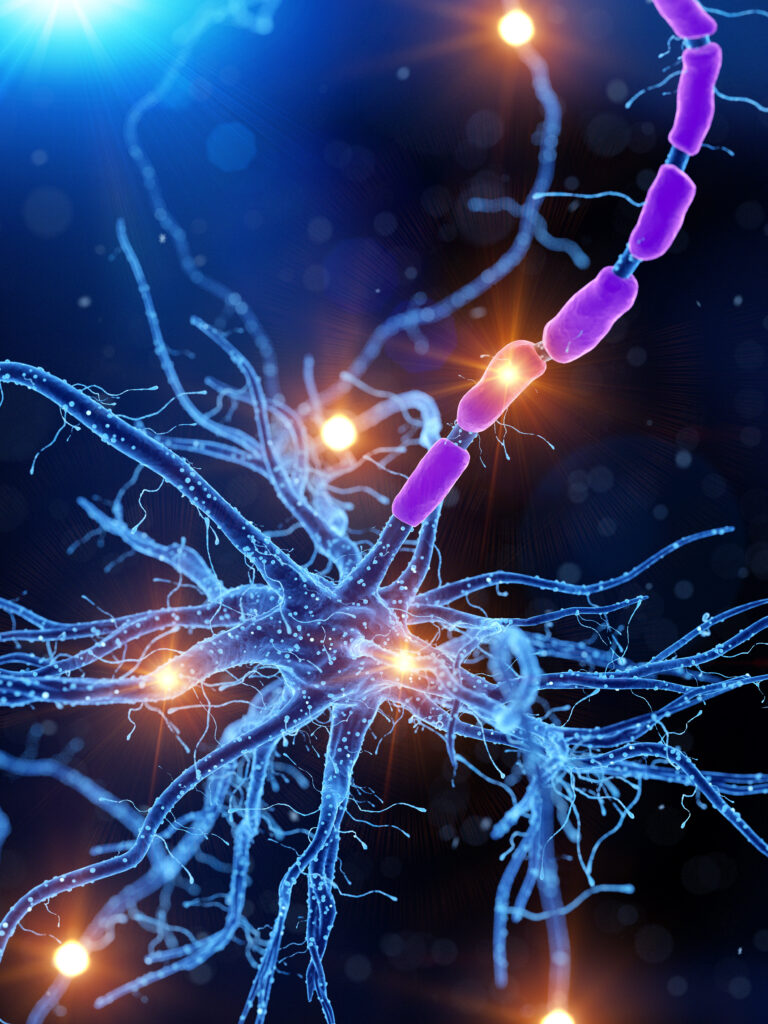Alzheimer’s disease is a progressive neurodegenerative disorder that affects millions of people worldwide. It is the most common cause of dementia, accounting for 60-80% of all cases. Despite extensive research, the exact cause of Alzheimer’s disease is still not fully understood. However, one potential factor that has gained increasing attention in recent years is the mTOR pathway and its alterations in Alzheimer’s disease.
What is the mTOR pathway?
The mammalian target of rapamycin (mTOR) pathway is a cellular signaling pathway that plays a crucial role in regulating cell growth, proliferation, and survival. It is a complex network of proteins and signaling molecules that respond to various stimuli such as growth factors, nutrients, and energy levels in the body.
The mTOR pathway is activated when cells receive signals from growth factors or nutrients, which leads to the activation of mTOR protein. This protein then acts as a master regulator, controlling various cellular processes such as protein synthesis, metabolism, and autophagy, which is the process of breaking down and recycling damaged or unnecessary cellular components.
How does the mTOR pathway relate to Alzheimer’s disease?
Studies have shown that the mTOR pathway is dysregulated in the brains of individuals with Alzheimer’s disease. This dysregulation can occur at various levels, including genetic, molecular, and functional alterations.
Genetic alterations:
Several genetic risk factors for Alzheimer’s disease have been identified, and many of them are linked to the mTOR pathway. The gene encoding for the mTOR protein itself, known as MTOR, has been found to be associated with an increased risk of developing Alzheimer’s disease.
In addition, genetic mutations in other genes involved in the mTOR pathway, such as PTEN and TSC1/2, have also been linked to an increased risk of Alzheimer’s disease. These mutations can disrupt the normal functioning of the mTOR pathway and contribute to the development of the disease.
Molecular alterations:
The mTOR pathway is essential for maintaining a balance between the production and removal of proteins in the brain. In Alzheimer’s disease, this balance is disrupted, resulting in an accumulation of abnormal proteins, such as amyloid beta and tau, in the brain.
Studies have shown that the dysregulation of the mTOR pathway can lead to increased production of these proteins and decreased clearance, contributing to the formation of plaques and tangles, which are characteristic features of Alzheimer’s disease.
Functional alterations:
In addition to genetic and molecular alterations, functional changes in the mTOR pathway have also been observed in individuals with Alzheimer’s disease. These changes can affect the normal functioning of brain cells and contribute to the progressive degeneration of brain tissue.
For example, studies have shown that the activation of mTOR protein is increased in the brains of individuals with Alzheimer’s disease. This increased activity can lead to excessive protein synthesis, which can be toxic to brain cells and contribute to their dysfunction and death.
Moreover, dysregulation of the mTOR pathway can also impair autophagy, the process responsible for removing damaged proteins and organelles from cells. This impairment can result in a build-up of toxic substances in brain cells, further contributing to their dysfunction and death.
Can targeting the mTOR pathway be a potential treatment for Alzheimer’s disease?
Given the significant role that the mTOR pathway plays in Alzheimer’s disease, many researchers believe that targeting this pathway could be a potential treatment strategy for the disease.
Several preclinical studies have shown promising results by blocking or inhibiting mTOR activity in animal models of Alzheimer’s disease. These interventions have been found to reduce the accumulation of amyloid beta and tau proteins, improve cognitive function, and slow down neurodegeneration.
However, it is vital to note that the mTOR pathway is also crucial for many other vital cellular processes, and inhibiting it completely could have adverse effects. Hence, finding the right balance of mTOR activity is crucial for potential treatment strategies to be effective.
Future directions in mTOR and Alzheimer’s research:
While there is still much to be learned about the exact role of the mTOR pathway in Alzheimer’s disease, it is evident that this pathway plays a significant role in the development and progression of the disease.
Further research is needed to better understand the complex mechanisms underlying the dysregulation of the mTOR pathway in Alzheimer’s disease. This could help identify potential targets for therapeutic interventions and pave the way for developing more effective treatments for the disease.
In conclusion, the mTOR pathway is a critical player in Alzheimer’s disease. Its alterations at various levels can contribute to the development and progression of the disease. By gaining a deeper understanding of these alterations, we can hope to develop more targeted and effective treatments for Alzheimer’s disease in the future.





